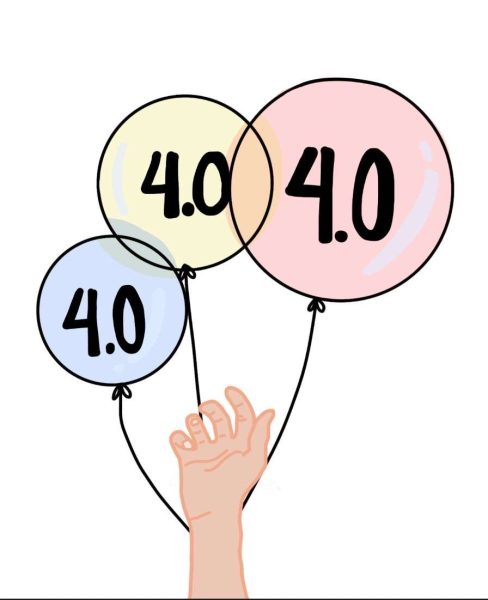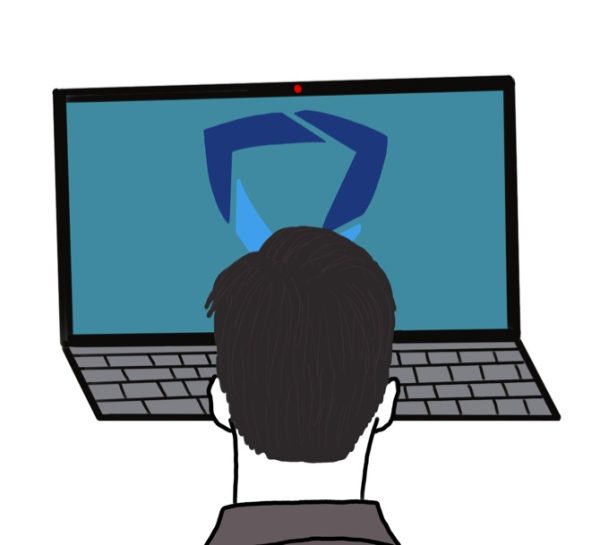
Redwood is known for its strong academic competitiveness, with the graduating class of 2023 earning 1,416 senior awards across various categories including the Redwood Honor Society and Advanced Placement (AP) Scholar awards.
In a community of such high achievers, it can be difficult to define a standout student. According to a study from American College Testing (ACT), high school students across the country’s average grade point average (GPA) rose from 3.17 to 3.36 between 2010 and 2021. This trend is evident at Redwood, as 37 percent of the class of 2024 had a weighted 4.0 GPA or higher and 80 percent of the class earned a 3.5 GPA or higher. GPA inflation, defined as the awarding of higher grades for lower-quality work, has become a significant issue in modern-day high schools.
Grade inflation complicates the college admissions process. As GPAs rise, colleges find it increasingly difficult to distinguish academic strength between applicants. Dr. Allison Belger has observed an influx of students with high GPAs, agreeing it is now harder to gauge academic strength solely based on grades. Belger is a psychologist based in California who specializes in the transition from high school to college.
“I think at this point, it’s a little bit harder to ascertain [academic strength] just from a bunch of A’s on a transcript because of grade inflation,” Belger said.
GPA inflation creates mounting pressure on students to continue achieving higher grades to meet unrealistic standards. However, it’s not just students that feel the increased pressure due to grade inflation.
“In extreme cases, anxious parents are even pressuring teachers to increase students’ grades, in the context of the looming college application process,” Belger said.
College advisor and former Redwood English teacher Kathryn Ghiraldini personally experienced the pressures of students and parents and it was apparent in her grading.
“I’ve had so many students that I think should get a C, that the numbers show a C, and I’ve given them a higher grade than that for many reasons. I feel like they’ve worked so hard,” Ghiraldini said. “I don’t know [if] the administration is going to support me [if I give them a higher grade].”
Inflated grades can lead students to a false sense of academic prowess, resulting in poorer academic performance in college which can affect students’ mental well-being. Ghiraldini has observed that students in high school with 4.0 GPAs or higher often struggle when adjusting to more rigorous college classes.
“When students leave for universities and higher education environments, especially like the University of California Berkeley, it is really hard for a student to go from getting a 4.4, which is realistically not a 4.4, to now getting C’s and B’s… they are struggling with that on a social and emotional level,” Ghiraldini said.
With grade inflation becoming increasingly prevalent, many students struggle to balance genuine learning with the pursuit of high GPAs. For this reason, AP and Honors classes are highly sought after, even though they contain more rigorous class material, due to the “weighted grade” that accompanies it. Redwood offers AP courses in 17 subjects including math, science, English, and art-based courses, putting them in the top 25 percent of California schools in AP offerings. Junior David Katz has noticed that students often enroll in classes mainly for a GPA boost rather than for learning or genuine passion.
“I know [other Redwood students] that just take these classes for the GPA boost, not to actually learn the material. I’m not saying I’m any different though,” Katz said.
The issue of grade inflation also ties into the broader debate over the necessity of standardized testing for high school students. With the rise in GPAs, standardized tests play more of an important role in the differentiation of students.
Despite the rise in GPAs, average ACT composite scores have decreased, reaching a ten-year low in 2021. In the fall of 2021, certain colleges began test-blind or test-optional policies for prospective students, meaning that they either don’t look at Scholastic Aptitude Tests (SAT) or ACT scores at all or they let students choose whether or not they want to submit their test results.
Ghiraldini shares the same views as this policy, arguing that the increase in average grades allows teachers and colleges to consider factors beyond a student’s GPA.
“Teachers are struggling with what should a grade reflect. I think that grades should represent academic achievement with the caveat that teachers are trained to allow students to be graded on a holistic level, meaning that students are graded not only on tests but on projects, performances and contributions,” Ghiraldini said.

With the rise of grades, standardized testing has gained renewed importance for assessing student ability. Many top-ranked colleges like Harvard, Yale and Dartmouth performed studies comparing how accurately GPAs, standardized test scores and a combination of both indicate academic performance in college. These studies helped inform their decision, leading to them returning to requiring ACT and SATs.
“[Certain colleges] are going back to requiring standardized testing because in large part what their data is showing is that the test scores alone are the best predictors of performance in college,” Belger said.
All of these challenges highlight how grade inflation may undermine academic integrity and affect students’ readiness for higher education and well-being. As Redwood and other institutions face this issue, it’s crucial to foster a more balanced approach to education. Belger supports the differentiation of students and believes that each person possesses individual strengths.
“Not everyone is capable of getting straight A’s if you’re really grading based on rigorous criteria,” Belger said. “[Just like how] not everyone can run a fast 100-meter dash, or dance or sing beautifully. We have to get over the idea that everyone has to be perfect at everything because that’s just not real.”








